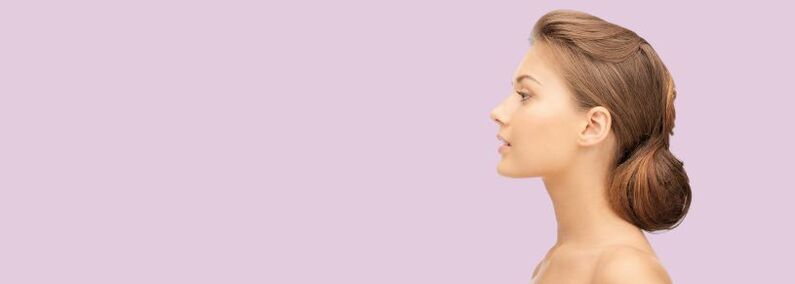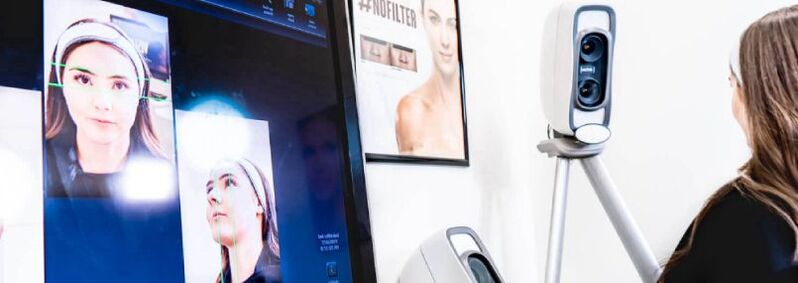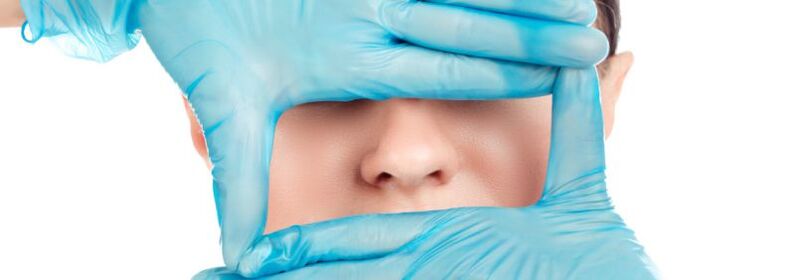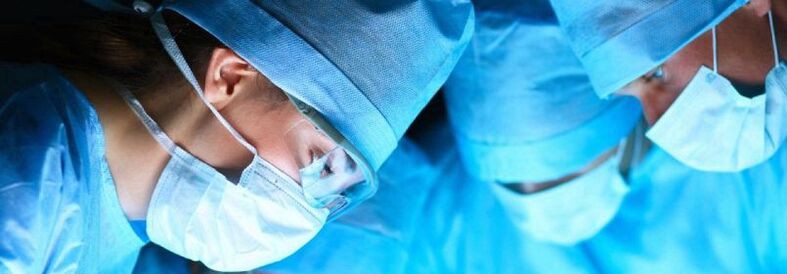
How do you know if you have indications for rhinoplasty?
According to the Australian Society of Aesthetic Plastic Surgeons, indications for rhinoplasty include any visual defect that is embarrassing to a person and functional impairment such as difficulty breathing.
The vision defects that patients most often want corrected include:
- the disproportion of the nose compared to other facial features;
- asymmetry;
- presence of a hump;
- large or asymmetric nostrils;
- a large, excessively retracted or drooping tip;
- the back is too thick, thin or uneven;
- excessive or insufficient length.
Among the errors causing functional impairment:
- congenital or acquired deformation of the nasal septum;
- fractures.
What are the types of rhinoplasty?

Based on the problem solved by the procedure, the American Society of Plastic Surgeons distinguishes the following rhinoplasty types: aesthetic and functional. Let's see how they differ from each other.
Aesthetic rhinoplasty
This procedure is used to correct the shape and size of the nose. According to the British Association of Aesthetic Plastic Surgeons, this type of rhinoplasty can correct:
- hump - remove bone and cartilage tissue in a certain area of the back of the nose;
- nostrils - change their shape and size, make them symmetrical;
- columella (bridge between nostrils) - straighten or thin;
- tip - raise, lower or lower;
- wings - make them symmetrical or less expressive.
During the procedure, the doctor can change the shape of the nose not only by removing tissue, but also by increasing its volume. For this, he uses an artificial implant or cartilage obtained from another part of the patient's body. Plastic surgeons call this operationaugmentation rhinoplastyobsessionvaccination.
Functional rhinoplasty (septoplasty)
According to Stanford University Medical Center, the purpose of septoplasty is to restore respiratory function that has been impaired due to a congenital disorder, injury, or other abnormality.
If a patient referred for surgery to restore breathing decides to further correct the shape of the nose, the doctors of the American Society of Aesthetic Plastic Surgeons recommend a combined procedure.rhinoplasty.
There are two subtypes of functional and aesthetic rhinoplasty:
- Reconstructive rhinoplasty- this is what the American Society of Plastic Surgeons calls an intervention aimed at correcting the shape of the nose due to congenital abnormalities (for example, rhinoplasty in the case of cleft palate and cleft lip), or re-creating a shape that has changed due to injury.
- Revision rhinoplasty- This is a repeated correction of the nose. Plastic surgeons recommend it if the patient is dissatisfied with the results of the previous intervention.
How is rhinoplasty performed?
The Spanish Society of Plastic, Reconstructive and Aesthetic Surgery distinguishes 2 rhinoplasty methods - open and closed. Their main difference is the access through which the doctor performs the operation.
How is closed rhinoplasty performed?
Plastic surgeons call closed rhinoplasty the least traumatic method of surgical nose correction. The procedure does not leave scars, as the doctor performs all operations through the nostril, without making an incision on the outside of the nose. Doctors use this technique for minor curvatures or defects.
How is open rhinoplasty performed?
In open rhinoplasty, the nose surgeon makes an incision in the columella and the outer corner of the nose. After that, he lifts the skin and makes corrections. Open rhinoplasty can correct serious defects and deformities. In this case, a small mark remains at the base of the nose, which becomes less noticeable over time. It can be removed with special cosmetics and procedures.
How can I determine which nose is right for me?

Before deciding on surgery, it is important to understand whether the face with the desired nose shape will be more beautiful. After all, there are cases when after rhinoplasty people lose their individuality and become less interesting and attractive.
According to the study, a 3D modeling machine makes it possible to choose a nose that will be in maximum harmony with other features. This setup takes a 3D photo of your face. The doctor and the patient process and adjust the nose in a special program until the optimal shape and size are selected.
Is there any preparation required for such a procedure?
According to the Australian Society of Plastic Surgeons, rhinoplasty requires some preparation. Includes:
- Consultation with a plastic surgeon. During this time, the person tells you exactly what you want to change. The doctor examines the nose, explains how realistic it is to achieve the desired result, and creates a model for the operation. During the consultation, it is important to ask the doctor all your questions, find out about the restrictions before and after the surgery, and find out about the risks and possible complications.
- Preoperative examination, which helps to ensure that there are no contraindications. This includes laboratory tests of blood and urine, electrocardiography (ECG), fluorography.
The American Society of Plastic Surgeons recommends that you do not smoke or take aspirin, anti-inflammatory drugs, or herbal supplements during the preparation period, as these can impair blood clotting.
How is rhinoplasty performed?
According to the American Society of Plastic Surgeons, the patient is under general anesthesia or local anesthesia during the surgery. The type of anesthesia is determined by the doctor during the preoperative consultation, focusing on the complexity of the procedure.
Depending on the type of access, the surgeon makes incisions inside or outside the nose and performs tissue correction, focusing on the 3D model.
At the end of the procedure, the doctor applies sutures, fixes the nose with special tampons or splints/rails (silicone plates that follow the shape of the nose) and a plaster cast.
The procedure usually lasts 1-2 hours (according to the Spanish Society of Plastic, Reconstructive and Aesthetic Surgery).
How does the healing process take place and when are the results visible?

Recovery after rhinoplasty raises the most questions. Patients want to know how quickly the signs of the procedure will disappear, when they can return to their normal lifestyle, and most importantly, when the results will be visible.
Rehabilitation
Depending on the general condition, the patient stays at the clinic for 1 night or goes home the same day. This time is enough to recover from anesthesia and gain strength. Subsequent healing takes place at home. Epistaxis may occur during this period, so it is important to keep in touch with your doctor to inform him of your condition.
It is important to understand that after rhinoplasty, facial swelling lasts for 2-3 weeks, and the final result cannot be evaluated (according to plastic surgeons). If, after this time, the patient notices that the new nose does not correspond to the 3D model at all, he must notify the doctor. In this case, a revision rhinoplasty is performed.
Possible side effects
Plastic surgeons warn of the following possible complications:
- difficult breathing;
- numbness in the operated area;
- asymmetry;
- pain;
- pigmentation;
- scarring;
- formation of a hole in the septum (perforation).
Restrictions
During recovery, plastic surgeons recommend the following:
- avoid strenuous physical activity and running;
- do not bathe;
- don't blow your nose;
- eat foods rich in fiber (e. g. fruit, vegetables) to avoid bowel difficulties and, as a result, high blood pressure;
- smile and laugh less;
- brush your teeth carefully so that your upper lip does not move actively;
- choose clothing that does not need to be pulled over the head to reduce the risk of accidental injury;
- do not wear glasses;
- use sunscreen.
Result
If we talk about the final result of rhinoplasty, it can be seen after 6 months (according to information from the American Society of Plastic Surgeons). During this time, the swelling goes down completely and the tissues grow together.
Is one action enough to achieve a result?
It is enough if, before the intervention, the patient clearly understands what result he wants to achieve, discusses all nuances with the doctor, creates a 3D model of the future nose together, and the surgeon recreates it exactly.
If, after the cast is removed or after full recovery, the patient realizes that something needs to be fixed, the doctor performs another operation.
It is important to understand that rhinoplasty is a surgical procedure, which means that it is stressful for the body. Therefore, before agreeing to surgery, make sure you clearly understand the outcome you want to achieve and communicate this to the surgeon.
How is non-surgical rhinoplasty performed?
People who want to correct their nose, but for some reason are not ready to solve the problem surgically, can pay attention to other methods of rhinoplasty - non-surgical. They provide a temporary effect and help you decide if surgery is worth it. The procedures are performed under local anesthesia and do not require rehabilitation - redness and swelling disappear within a few hours. There are the following types of non-surgical rhinoplasty:
Correction with fillers (contour rhinoplasty)
According to the data, the procedure involves injecting the drug into the area that needs to be changed (such as the back of the nose to smooth out a hump or the tip of the nose to enlarge it). Doctors most often use hyaluronic acid as a filler, less often collagen. These are natural substances found in all of our bodies. Thanks to this, the risk of complications is minimal. The results of such injections last up to 14 months. After this period, the fillers dissolve. Possible side effects include encapsulation (tissue compaction around the drug). This process is the body's natural reaction to a foreign substance.
Be careful!
If you decide to have rhinoplasty, be sure to ask your doctor what medication you are using. Some doctors recommend the introduction of biopolymer (biogel) - a synthetic material that, unlike hyaluronic acid and collagen, is not excreted from the body. Such procedures are considered dangerous and are prohibited in some countries. The biopolymer can cause inflammation and migrate. This means that over time, the filler injected into the nose can end up in the chin, face or around the eyes. Biogel can only be removed by surgery, after which scars remain on the face.
Nose lipofilling
According to information from the American Society of Plastic Surgeons, in the case of lipofilling, correction is done by injecting a person's own fat under the skin (this substance is also called autologous filler). The procedure provides an effect similar to hyaluronic acid and collagen injections: unevenness is filled and tissue volume in a given area increases. The effect of lipofilling lasts for about 3 years. You can't lose weight to maintain this.
Botox (botulinum toxin) injections
According to data, botulinum toxin reduces tissue volume by relaxing muscles. The technique makes it possible to raise or lower the tip, make the nose symmetrical and correct the shape of the nostrils. Possible side effects include difficulty breathing and changes in the height of the upper lip when smiling. The effect lasts up to 2 years.
Mesofibers
This type of nose correction is called thread lifting or mesothread lifting. According to research, it allows changing the shape of the wings and raising the tip. The essence of the procedure is the introduction of special fibers subcutaneously. Over time, they dissolve, forming a collagen framework that anchors the tissue and keeps the new shape of the nose. The effect lasts up to 2 years.
And most importantly. . .

Before agreeing to any of the mentioned procedures, be sure of the expertise of the plastic surgeon.
When it comes to surgery, the American Society of Plastic Surgery recommends that the doctor's experience with the procedure be considered first. Pay attention to your profile - you need to specialize in facelift operations. It is important that the doctor has international certificates and accreditations proving his qualifications. It is recommended that the doctor take part in an internship abroad (for example, in the USA and European countries) to improve his skills.
Would you like to have a non-surgical rhinoplasty? Choose a beautician with advanced medical education who receives patients not at home, but at a special clinic. In such centers, sterility and all conditions for the safe execution of medical procedures are observed.
Take care of your health and beauty, leave it only to professionals!






















